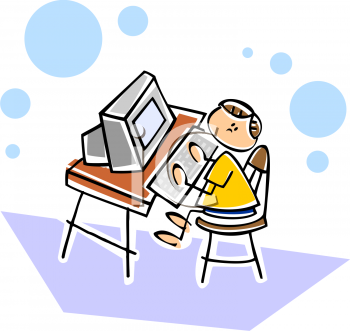The possibilities are endless. It's time for us as educators to take advantage of the many resources and technologies available. Before using blogs or other web tools with students, I believe it's important to be completely familiar with the technology. For this reason, I think it would be beneficial for me to become part of a community of teachers to share and offer ideas, as well as to gain experience blogging. Once I felt prepared to share my knowledge with students, here are just a few of the ways I would do so.
1. Journal writing/reading responses: Typically, when students are asked to write informal journal entries or responses to books they have read, the teacher is the only one who reads what is written, which sometimes develops into a written conversation. If this same task was completed using a blog, this would allow other students to read each others' thoughts and ideas. They could respond to their peers' posts and read comments from everyone, not just one teacher. A sense of community would develop from working together and offering comments.
2. Discussing and debating current events: Using my blog, I could post links to articles or videos that would be appropriate and relevant to class discussions. The students would post their opinion on these matters. This would require them to read, think about how they feel, express their feelings in a safe environment, and stay informed about what is going on in the world they live in.
3. Extending or introducing class topics: Before beginning a unit or new lesson, I could use a blog as an introduction, or anticipatory set. I would post a question for students to consider, a short reading to make them think, a topic to discuss with family members, or an assignment to complete before class. As a post-topic activity I might ask students to reflect upon what was discussed during class, or informally assess their learning by reading what they took out of the day's lesson.
Standards (related to all 3 ideas):
ELA :
Standard 2 Students will read, write, listen, and speak for literary response and expression.
Students will read and listen to oral, written and electronically produced texts and performances, relate texts and performances to their own lives, and develop an understanding of the diverse social, historical, and cultural dimensions the texts and performances represent. As speakers and writers, students will use oral and written language for self-expression and artistic creation.
Standard 4
Students will read, write, listen, and speak for social interaction.
Students will use oral and written language for effective social communication with a wide variety of people. As readers and listeners, they will use the social communications of others to enrich their understanding of people and their views.
Technology:
Standard 2: Students will access, generate, process, and transfer information using appropriate technologies.
Computer Technology
Key idea: Computers, as tools for design, modeling, information processing, communication, and system control, have greatly increased human productivity and knowledge.





